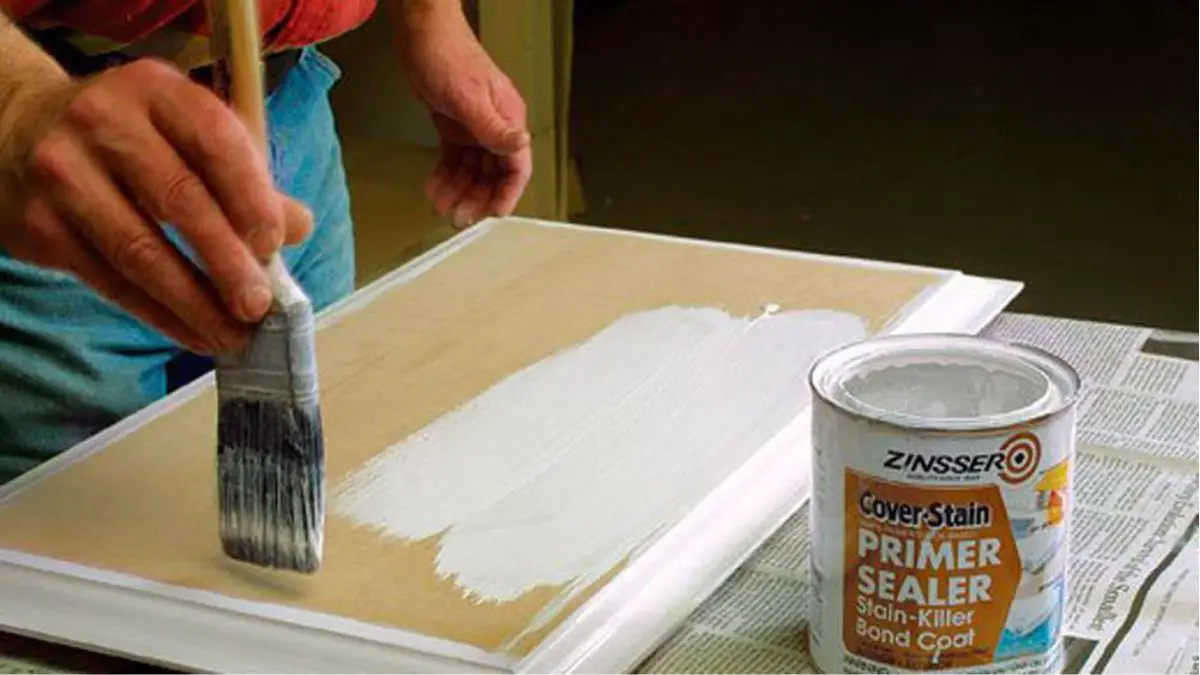Updated 3/24/2024
Can you paint and sand MDF to achieve a smooth finish without damaging it?
MDF is a versatile material, but working with it requires some know-how to achieve that perfect finish.
In this post, we’ll explore the dos and don’ts of painting and sanding MDF, providing you with expert tips to ensure your project turns out just the way you planned.
So, whether you’re planning to create custom furniture or add a splash of color to your MDF creations, let’s get into how to make your MDF projects stand out with a flawless finish!
What is MDF?
MDF stands for “medium-density fiberboard,” an engineered wood product made by breaking down hardwood or softwood into wood fibers and then binding the fibers together with adhesives.
MDF is denser than plywood and is used for various applications, including:
- Furniture
- Door panels
- Shelving
- Molding
MDF is available in various thicknesses and sizes and can be painted or stained to match any décor.
How to Sand MDF
Before you can refinish or paint MDF, it’s important to sand the MDF down to achieve the smoothest surface possible
To do this job right, you’ll need…
- A palm sander
- 40-grit sandpaper (coarse)
- 80 or 100-grit sandpaper (medium)
- 120 or 220-grit sandpaper (fine)
- A tack cloth
Here are some simple step-by-step instructions on how to sand MDF like a pro!
1. Begin sanding with coarse-grit sandpaper.
Sand along the wood grain with the 40-grit sandpaper to smooth out any significant imperfections or unevenness on the surface of the MDF. Use a palm sander for the best results.
2. Continue sanding with medium-grit sandpaper.
Once the large imperfections have been sanded away, switch to the 80 or 100-grit sandpaper. This steady progression will help to smooth out the surface even further.
3. Finish sanding with fine-grit sandpaper.
To achieve a super smooth finish, switch to the 120 or 220-grit sandpaper and sand in a circular motion until the surface is completely smooth.
4. Clear the surface of residual dust.
Once you’re finished sanding, be sure to wipe away any dust with your tack cloth.
And that’s it! You’re ready to paint the MDF now. Remember – the key to a great finish is starting with a smooth, even surface. Sanding is the best way to achieve this. So don’t skip this crucial step!
How to Paint MDF Board
Now that you’ve done your sanding, it’s time to paint. Painting MDF can be tricky, as the material is prone to absorb water and swell.
However, you can achieve a professional-looking finish by following these simple steps.
To do this job right, you’ll need…
- Oil-based primer
- A quality paintbrush or roller
- Oil or water-based paint
- Oil-based sealer
- Tack cloth
1: Prepare your surface.
Remove any stickers or labels from the surface of the MDF. Sand down any rough spots on the MDF with sandpaper. Clean off any dust and debris from the surface of the MDF using a damp cloth or old t-shirt.
2: Apply primer.
Apply a coat of primer to the surface of the MDF. For the best results, use an oil-based primer designed specifically for MDF.
This primer will help seal the board’s porous surface and create a smooth base for the paint to adhere to.
We’ve found that Zinsser Cover Stain primer works best on MDF for this purpose.
Don’t forget to let the primer dry completely before applying the first coat of paint.
3: Apply the paint coat.
Once the primer is dry, you can begin painting the MDF using oil or water-based paint. Apply 2-4 thin coats for the best coverage.
4: Apply the sealer.
Finally, seal the painted MDF with a clear, oil-based polyurethane finish like Minwax Fast-Drying Polyurethane to protect it from moisture damage.
Allow the sealer to dry completely before using or handling the MDF board.
Frequently Asked Questions (FAQs)
What paint can I use on MDF?
Either oil-based or water-based paint will be fine. For a high-gloss finish, consider using enamel paint. For a more muted look, use latex paint. Whichever type of paint you choose, apply it in thin coats and allow each coat to dry thoroughly before applying the next.
How do I get a smooth paint finish on MDF?
Use a high-quality brush or roller to apply even coats of paint. Two to four thin coats usually do the trick.
Can you sand MDF furniture?
Yes. Sanding MDF furniture can help create a smooth surface that will resist scratches and other damage. However, it is important to use the right type of sandpaper when sanding MDF furniture. Coarse sandpaper can quickly damage the paint surface of the MDF, so it is important to use finer grit sandpaper (such as #220).
Can you paint laminate MDF furniture?
There are a few tricks you can use to get a good finish. First, lightly sand the furniture’s surface to rough it up and provide a good surface for the paint to adhere to. Next, use a primer designed for laminate surfaces to create a barrier between the paint and the furniture. Finally, choose a high-quality paint formulated for use on laminate surfaces.
Is using Sanding Sealer on MDF a good idea?
Using Sanding Sealer on MDF comes down to personal preference. Sanding sealer is no different than a shellac or thick lacquer, and while Sanding Sealer wouldn’t hurt the MDF, other oil-based filling primers would work just as well for this purpose.

